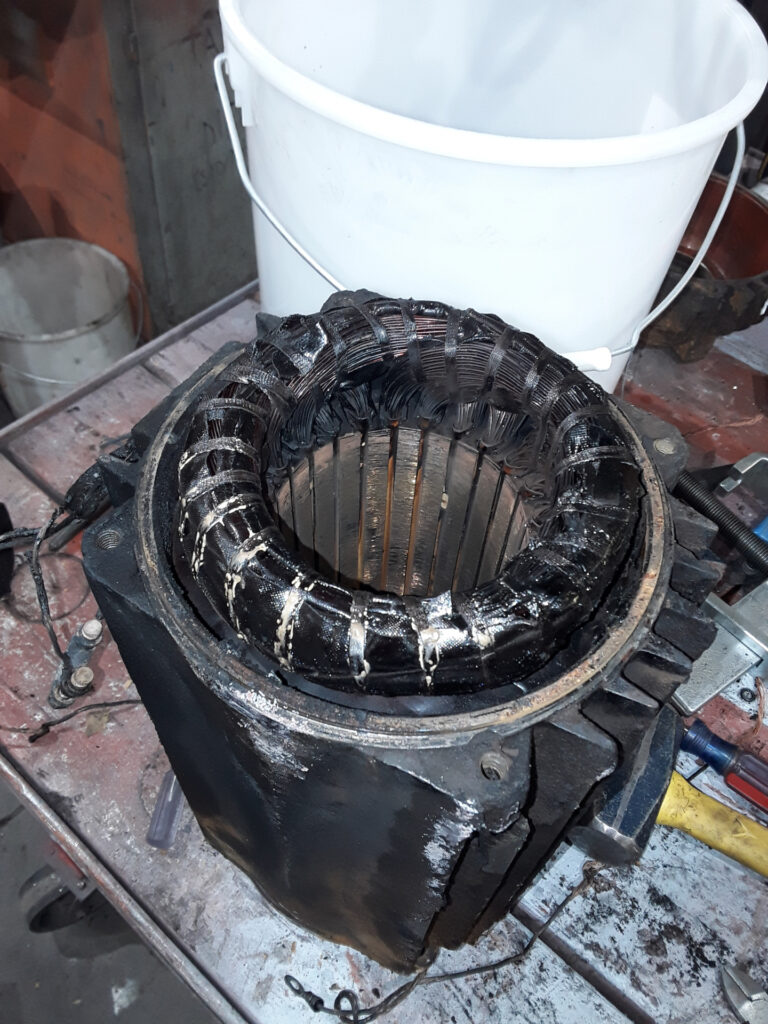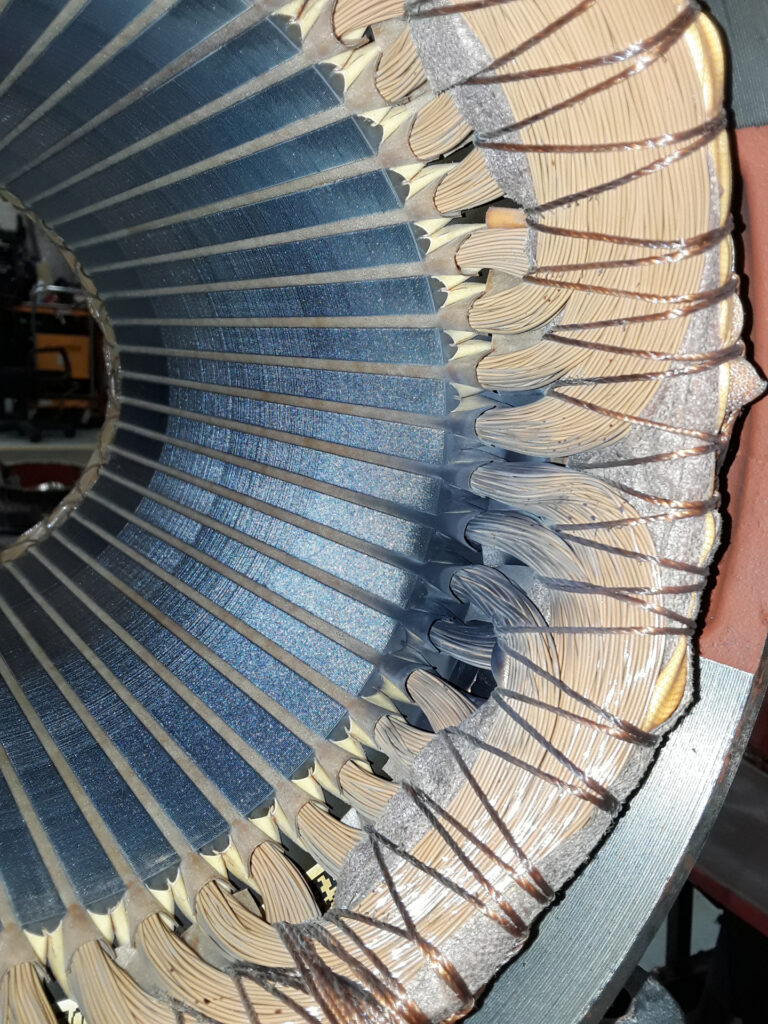What are the motor winding failures?
Winding failure is the second most common motor failure. Almost one in five motor failures happens because of stator winding errors. There are a couple of reasons behind stator winding failures. Below is a list of common issues and the solutions to those issues.
This is part three of a six-part series exploring common motor failures and the solutions to preventing or fixing the related damages. This series also covers motor bearings, rotor bars, external conditions, shaft couplings, and an overall summary of common motor failures.
Winding problems account for 16% of all motor failures.
The most common issues with stator windings involve overloading and/or overheating.

Overloading
Overloading the motor shaft causes excessive heat that leads to motor winding failure. Voltage spikes caused by things like VFDs can damage standard motors that aren’t inverter-duty rated.
VFDs are also used, and programmed to trigger an automatic shutdown in the case of overload, so it’s one of the best overload protection devices you can use. Additionally, the VFD won’t allow a restart if significant damage has occurred, such as melted wires or burned insulation.
Overheating
The cooler your motor operates, the longer its expected operating life. Overheating impacts the windings first and foremost, because that’s where the motor’s energy is created.
Excessive starts are a major cause of overheating. During startup, a motor has to handle between six to eight times its rated current (when started directly across the line). This can increase the thermal status of the motor, adding to the thermal stress on the windings to the point of failure.
Overheating can also be caused by running a VFD-operated motor too slowly, which in turn decreases the cooling fan speed and allows heat to build up. Overheated windings will put off a burnt smell and start to turn black in spots.
To prevent stator winding overheating, keep a record of your starts and stops, then chart out which motors have problems keeping pace with your daily operation. They may require an upgrade. You can find motors that automatically limit how many starts and stops they can perform within a set timeframe.
Overheating due to slow run speeds can be prevented by adding a constant speed fan that will consistently push air regardless of the motor’s RPM. But the issue lies more with your application than with the motor. The driven equipment has to allow the motor to reach its rated synchronous speed fast enough to prevent overheating, so make sure you’ve paired the right motor with your application before throwing on things like auxiliary cooling fans.

Are your windings ready?
Is your system adequately protected against issues like voltage spikes? Does your team know how to prevent downtime if an overload or overheat occurs?
Be sure to understand the potential issues of overloading and overheating to prevent further problems, and ultimately, prevent motor failure. If you would like to learn more about motor failures and solutions, read our other installments which cover motor bearings, rotor bars, external conditions, and shaft coupling.
If you have any additional questions, please reach out to our experts at goemc.com, or fill out the contact form below.



